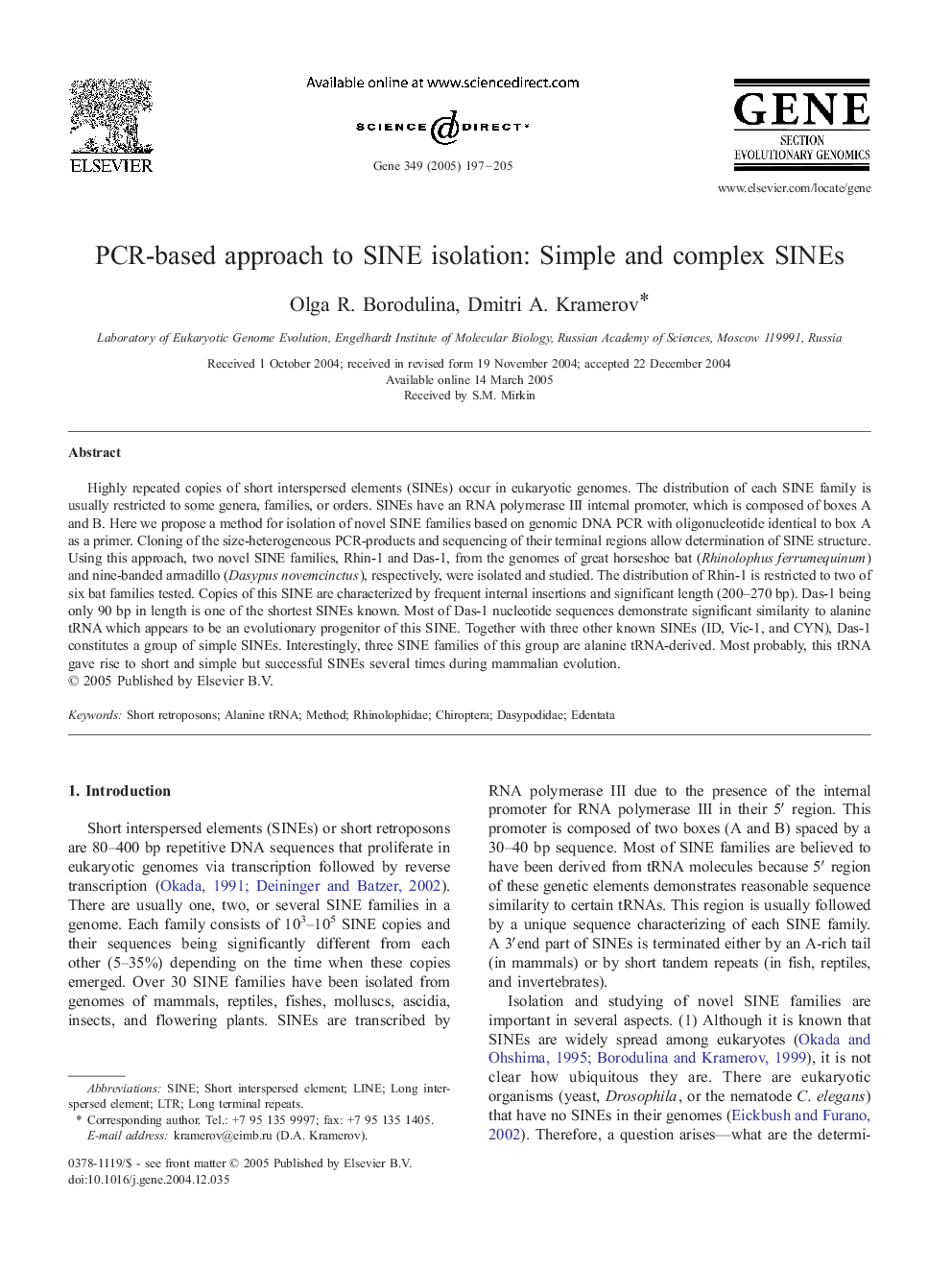| کد مقاله | کد نشریه | سال انتشار | مقاله انگلیسی | نسخه تمام متن |
|---|---|---|---|---|
| 9127274 | 1569973 | 2005 | 9 صفحه PDF | دانلود رایگان |
عنوان انگلیسی مقاله ISI
PCR-based approach to SINE isolation: Simple and complex SINEs
دانلود مقاله + سفارش ترجمه
دانلود مقاله ISI انگلیسی
رایگان برای ایرانیان
کلمات کلیدی
موضوعات مرتبط
علوم زیستی و بیوفناوری
بیوشیمی، ژنتیک و زیست شناسی مولکولی
ژنتیک
پیش نمایش صفحه اول مقاله

چکیده انگلیسی
Highly repeated copies of short interspersed elements (SINEs) occur in eukaryotic genomes. The distribution of each SINE family is usually restricted to some genera, families, or orders. SINEs have an RNA polymerase III internal promoter, which is composed of boxes A and B. Here we propose a method for isolation of novel SINE families based on genomic DNA PCR with oligonucleotide identical to box A as a primer. Cloning of the size-heterogeneous PCR-products and sequencing of their terminal regions allow determination of SINE structure. Using this approach, two novel SINE families, Rhin-1 and Das-1, from the genomes of great horseshoe bat (Rhinolophus ferrumequinum) and nine-banded armadillo (Dasypus novemcinctus), respectively, were isolated and studied. The distribution of Rhin-1 is restricted to two of six bat families tested. Copies of this SINE are characterized by frequent internal insertions and significant length (200-270 bp). Das-1 being only 90 bp in length is one of the shortest SINEs known. Most of Das-1 nucleotide sequences demonstrate significant similarity to alanine tRNA which appears to be an evolutionary progenitor of this SINE. Together with three other known SINEs (ID, Vic-1, and CYN), Das-1 constitutes a group of simple SINEs. Interestingly, three SINE families of this group are alanine tRNA-derived. Most probably, this tRNA gave rise to short and simple but successful SINEs several times during mammalian evolution.
ناشر
Database: Elsevier - ScienceDirect (ساینس دایرکت)
Journal: Gene - Volume 349, 11 April 2005, Pages 197-205
Journal: Gene - Volume 349, 11 April 2005, Pages 197-205
نویسندگان
Olga R. Borodulina, Dmitri A. Kramerov,